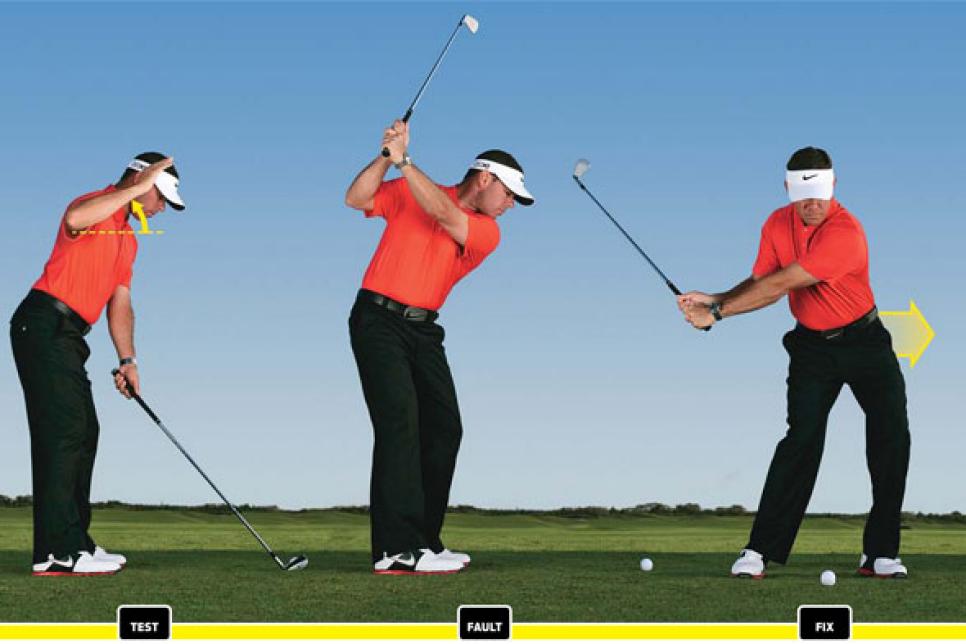Approach Shots
Bump Your Hip To Slot The Club

You might have been told that when you reach the top of your backswing, the clubshaft should be pointing on a parallel line with your target. This signifies that you're on plane and you won't have to re-route the club on the way down to hit an accurate shot. It's good advice, but for many golfers, it's useless information because they have poor shoulder mobility. If you don't have enough external rotation, it's impossible to get the club in this position without suffering pain or injury.
You can tell if you have limited external rotation in either shoulder with this test: Get into your address posture, and hold one arm out to your side at shoulder height, bent at 90 degrees but still parallel with the ground. From this position, you should be able to rotate that hand up so it can go past your ear. If you can do that, you have enough mobility to set the club parallel with the target line at the top of your backswing. If you can't (above, left), when you swing to the top, someone standing behind you along the target line can see your golf shaft pointing right of your target (above, middle). This is known as being "across the line," and unless you make some last-second adjustments on the downswing, this can lead to all sorts of bad shots.
You'll need to work on improving your shoulder mobility. But if the limitations are here to stay, or you're simply comfortable playing from this across-the-line position, there is something you can do to improve your contact. As you start the downswing, let your lead hip move laterally toward the target, and keep driving your body in that direction for as long as you can (above, right). This will allow the club to drop into a slot inside the target line and get into a better position at impact more consistently.
THE FOLEY FILES A tour player walks off the course after a brilliant 66. An interviewer asks him about his round, and the player says, "I felt great out there today." The player, whether he realizes it or not, is making reference to his state of mind. Being in a wonderful state of mind allows us to be resilient to adversity. It's not so much the mental aspects of behavior but the physiological ones that control our mental state. Understand that mood is the key. Being in a bad mood hinders our ability to access our physical skill set. It's difficult to play good golf when in a bad mood.
Sean Foley, a Golf Digest Teaching Professional, works at the Core Golf Junior Academy, outside of Orlando.